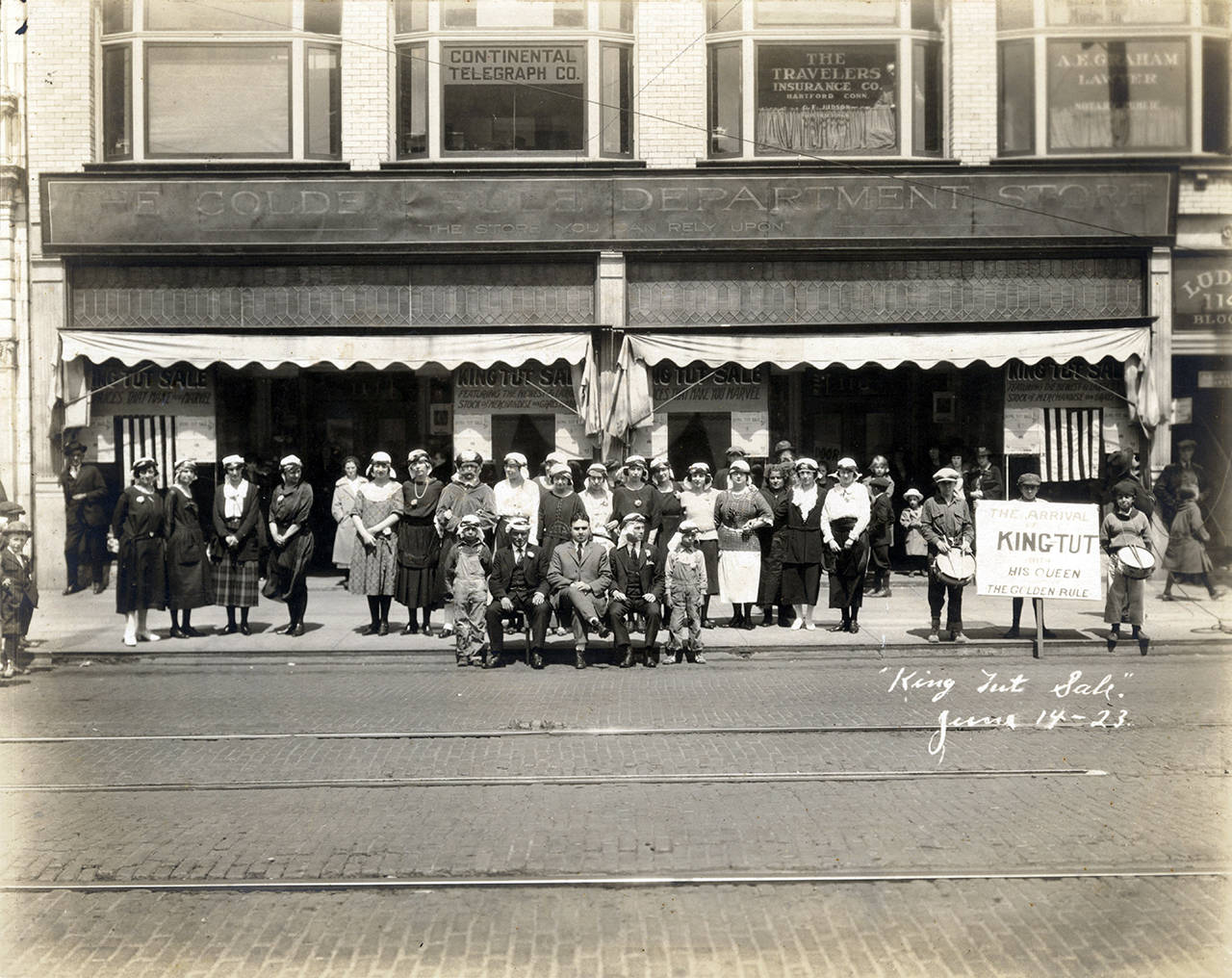By Roy Vataja
On the morning of June 14, 1923, donning “Egyptian headdress,” the management and staff of the Golden Rule Department Store — “The Store You Can Rely Upon” — gathered for a photo in front of the business at 114-116 E. Heron St.
It was the kickoff to their “King Tut sale,” riding the wave of interest following the discovery of King Tutankhamen’s tomb the previous November.
While none of the people in the photograph are identified, it is almost certain that the man seated dead-center is A.A. Bitar, proprietor of the store. Among the businesses on the second floor at the time were the Continental Telegraph Co., G.F. Judson’s Travelers Insurance Co. and the offices of attorney A.E. Graham. Visible in the foreground, cutting through the brick street, are the Grays Harbor Railway & Light Co.’s streetcar tracks.
Mr. Bitar opened the Golden Rule in September 1915 — a few months after the previous tenant, J.S. Waugh’s dry goods and shoes, moved to the roomier Electric Building at the corner of Heron and Broadway. The Golden Rule Department Store continued at this location into the late 1950s, and a painted wall sign from that era is still visible in the alley.
Originally known as the Lodie Block, by the 1950s the building had been rechristened the Bitar building. Today it is the location of Past & Present Antique Mall, and it’s entirely possible that some of the antiques in that store were originally purchased new from the same storefront back when it was the Golden Rule.
Roy Vataja is the son of Finnish immigrants and visited Boston and the Constitution more than 30 years ago, fully unaware that 55 years earlier the historic vessel had plied the waters of Grays Harbor.


